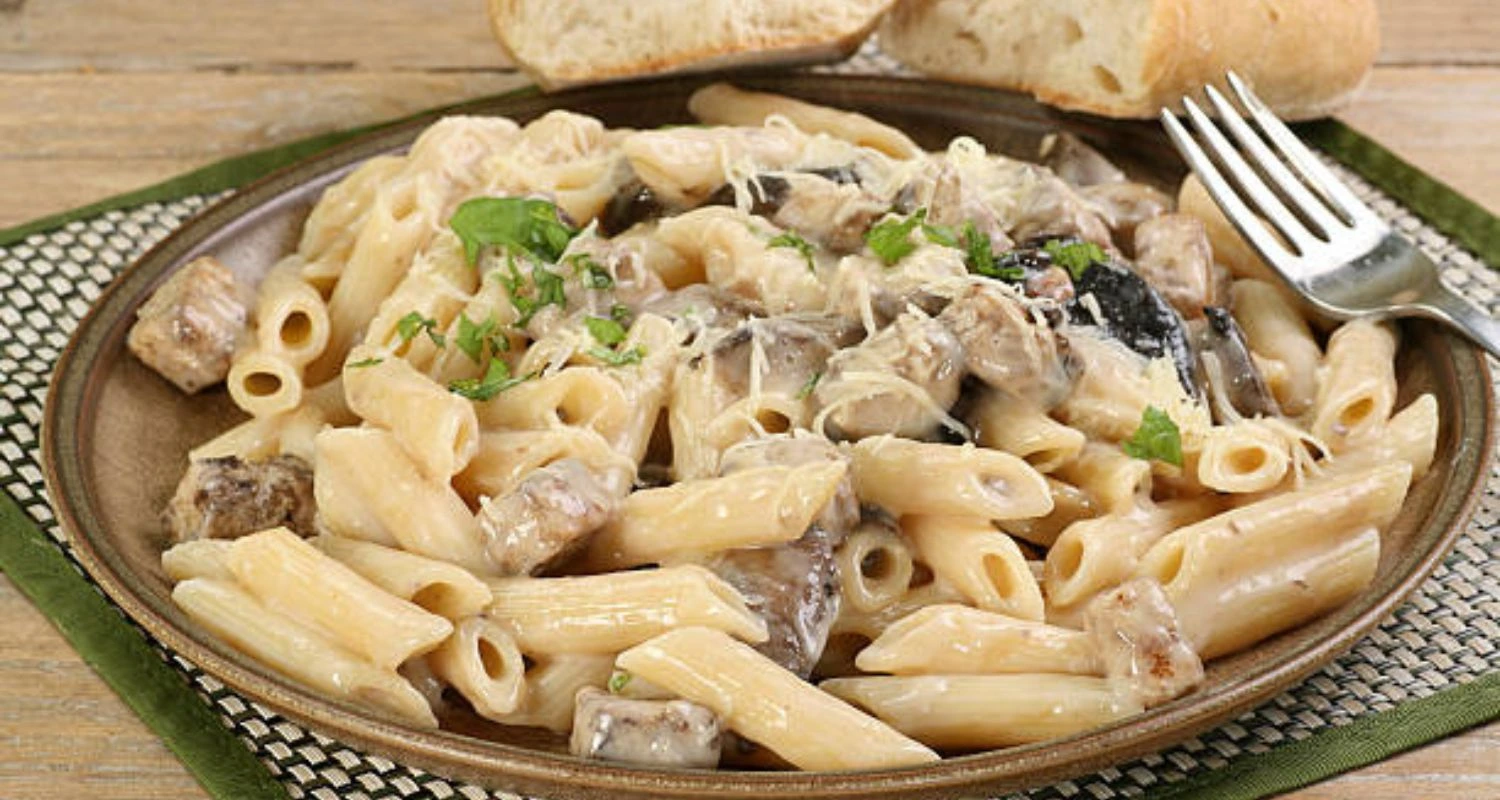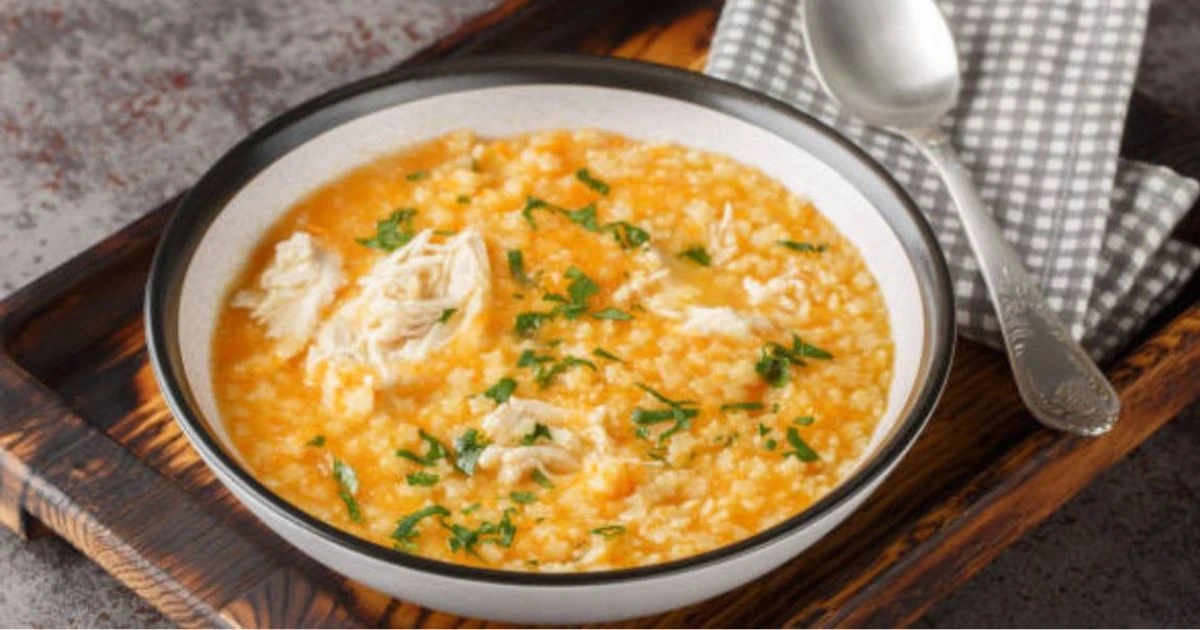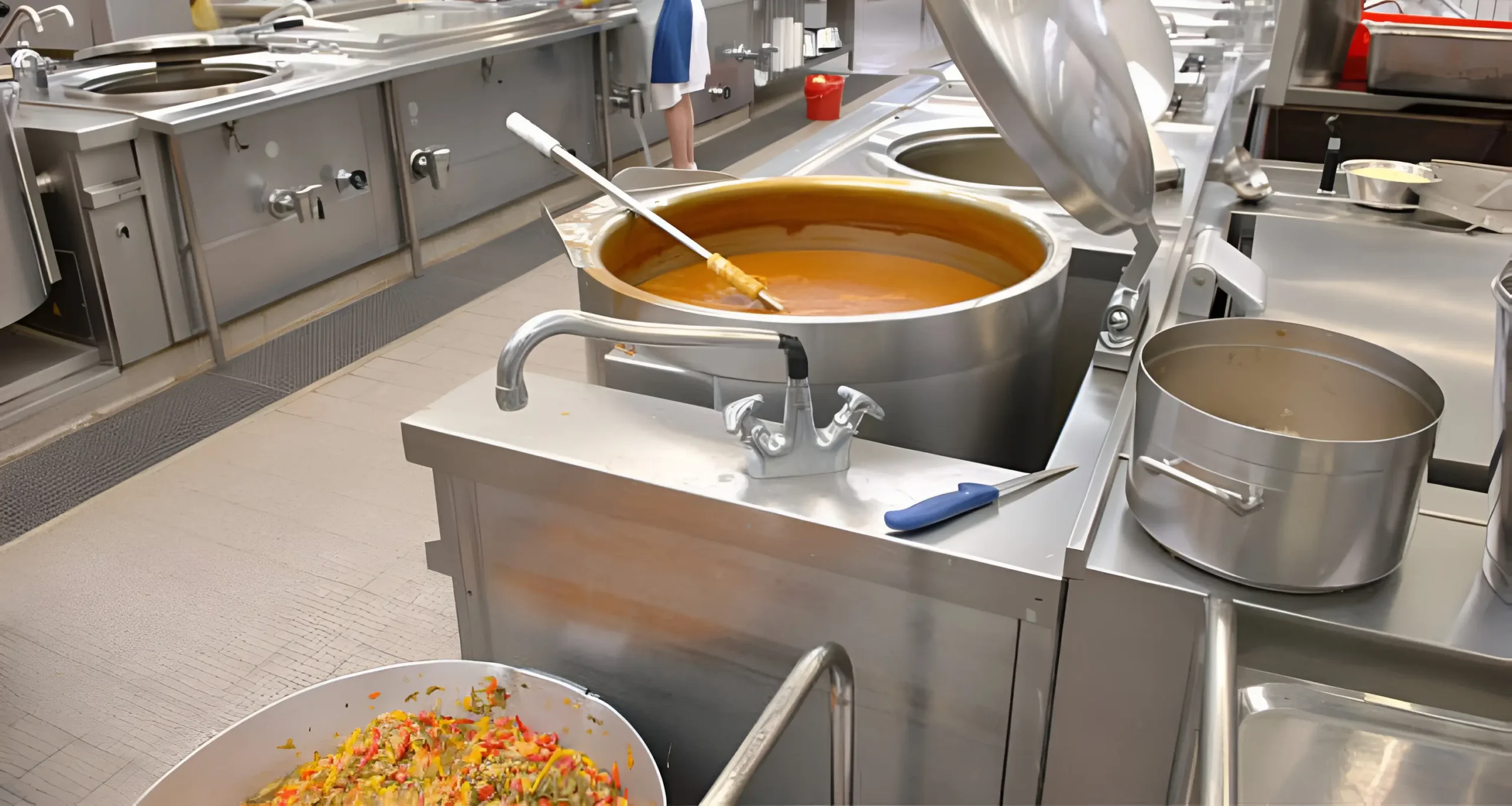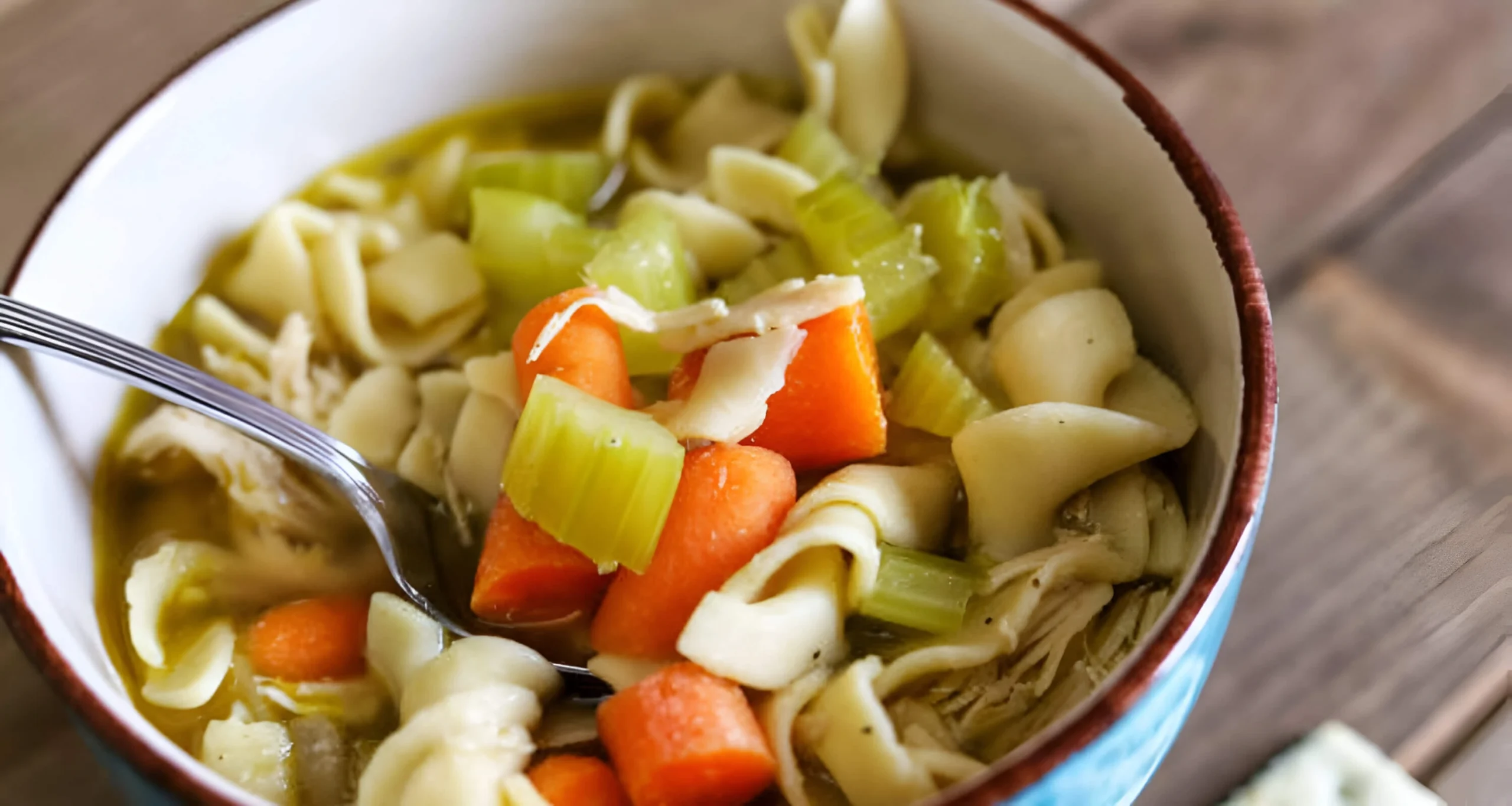Pastina Soup: How to Make It in 20 Minutes Flat

Looking for a warm, comforting meal that’s quick to make? Pastina soup is your go-to. This classic Italian dish turns simple ingredients into a cozy meal in just 20 minutes. It’s perfect when you’re not feeling well or need a fast meal.
Pastina soup is more than just a recipe. It’s a cherished tradition in Italian families. Its beauty is in its simplicity. With just a few ingredients and easy steps, you’ll learn to make pastina that feels like grandma’s cooking.
Key Takeaways
- Pastina soup can be prepared in under 20 minutes
- Perfect comfort food for cold days or when feeling sick
- Requires minimal cooking skills
- Uses basic pantry ingredients
- Authentic Italian recipe with deep cultural roots
What Is Pastina Soup and Its Italian Heritage
Italian pastina soup is more than a meal; it’s a treasured tradition in Italian families. Known as the “Italian penicillin soup,” it has helped families for generations. It’s a comforting dish that heals and brings people together.
This soup comes from rural Italian kitchens. Home cooks made nourishing meals from simple ingredients. It’s made with tiny pasta in rich chicken broth, perfect for when you’re not feeling well.
The Cultural Significance of Italian Penicillin Soup
In Italian families, pastina soup is seen as a kind of medicine. It’s called “Italian penicillin soup” because it helps fight off colds and flu. It’s a way to feel better and connect with loved ones.
- Provides essential nutrients during illness
- Offers emotional comfort and connection
- Represents familial love and care
Traditional Family Recipes Through Generations
Pastina soup recipes have been passed down for years. Each generation adds their own touch, keeping family history alive. It’s a way to share love and tradition through food.
| Generation | Typical Preparation | Cultural Significance |
|---|---|---|
| 1st Generation Immigrants | Basic chicken broth with small pasta | Reminiscence of homeland comfort |
| 2nd Generation | Enhanced with local ingredients | Blending tradition with new culinary influences |
| Modern Families | Gourmet variations with organic ingredients | Maintaining core emotional connection |
Whether you’re sick or just want a taste of tradition, Italian pastina soup is here to comfort you. It warms hearts and heals souls across generations.
Essential Ingredients for Authentic Pastina Soup
Making authentic Italian pastina soup starts with the right ingredients. This comforting dish needs a mix of simple yet flavorful parts. These parts turn a basic recipe into a special meal.
The key to any pastina soup is the tiny pasta stars. Choose high-quality pastina that cooks fast and soaks up the broth’s rich flavors. For the best taste, pick brands from Italy.
- Pastina pasta (star-shaped or small pasta)
- Chicken broth (homemade or high-quality store-bought)
- Fresh eggs
- Grated Parmigiano-Reggiano cheese
- Unsalted butter
- Fresh parsley (optional)
For your Italian pastina soup, fresh ingredients matter a lot. Choose organic chicken broth and farm-fresh eggs for a creamy texture. Butter and cheese add depth and richness, making the soup special.
Pro tip: To make your pastina soup even better, add a pinch of salt and freshly ground black pepper. Some families like adding fresh herbs or extra virgin olive oil for extra flavor.
“The beauty of pastina soup lies in its simplicity and the love poured into each ingredient.” – Italian Cooking Tradition
Kitchen Tools You’ll Need for Perfect Pastina
To make perfect pastina, you need the right kitchen tools. These tools make cooking smooth and delicious. They help you make an authentic Italian comfort dish easily.
- Medium-sized saucepan (2-3 quart capacity)
- Wooden spoon or silicone spatula
- Measuring cups and spoons
- Sharp kitchen knife
- Cutting board
Recommended Pot Sizes and Utensils
Choosing the right pot size is key. A medium saucepan is best for home cooking. It gives enough room for stirring and prevents spills.
| Pot Size | Serving Capacity | Recommended Use |
|---|---|---|
| 2-quart saucepan | 2-3 people | Perfect for family meals |
| 3-quart saucepan | 4-5 people | Ideal for larger gatherings |
Optional Equipment for Enhanced Results
These tools are not necessary but can improve your pastina-making:
- Immersion blender for smoother textures
- Digital kitchen scale for exact measurements
- Microplane grater for fresh cheese garnish
Quality tools help you make pastina with confidence and precision.
Choosing the Right Pastina Shape for Your Soup
Choosing the right pasta shape is key to a great italian pastina soup. Each shape adds its own twist to the soup’s texture and taste.
Traditional italian pastina soup uses small, delicate pasta shapes. These shapes fit perfectly with the broth’s smoothness. The most loved shapes are:
- Stelline (little stars): Perfect for soups due to their tiny size
- Orzo: Rice-shaped pasta that adds subtle texture
- Alfabeto: Alphabet-shaped pasta that delights children
- Acini di pepe: Tiny round pasta resembling peppercorns
When picking your pastina soup shape, think about these important points:
| Pasta Shape | Cooking Time | Texture Profile |
|---|---|---|
| Stelline | 3-4 minutes | Delicate, light |
| Orzo | 6-7 minutes | Slightly chewy |
| Alfabeto | 4-5 minutes | Fun, playful |
The success of your pastina soup depends on the pasta shape you choose. Smaller shapes like stelline blend well with the broth. Larger shapes offer more substantial bites.
The Perfect Chicken Broth Base for Pastina Soup
The heart of any delicious chicken pastina soup lies in its broth. Whether you’re making a traditional Italian sick soup or a comforting family recipe, the right broth makes all the difference. It can turn your dish from ordinary to extraordinary.
Making the perfect chicken broth needs careful thought about ingredients and technique. Your choice between homemade and store-bought broth greatly affects the soup’s taste and nutrition.
Homemade Broth Essentials
Making your own chicken broth lets you control every ingredient. Here are the key parts for a real chicken pastina soup base:
- Whole chicken or chicken parts with bones
- Fresh vegetables like carrots, celery, and onions
- Herbs such as parsley, thyme, and bay leaves
- Sea salt and fresh cracked pepper
Enhancing Your Broth’s Flavor Profile
Professional chefs say depth of flavor comes from careful preparation. Roasting chicken bones before simmering makes the broth richer. This makes your Italian sick soup more complex and satisfying.
| Broth Type | Preparation Time | Flavor Intensity |
|---|---|---|
| Homemade | 2-3 hours | High |
| Store-Bought (Organic) | Instant | Medium |
| Store-Bought (Standard) | Instant | Low |
“A great broth is the foundation of a memorable soup.” – Culinary Wisdom
For busy home cooks, high-quality organic store-bought broths are great alternatives. Choose options with minimal preservatives and rich chicken flavor. This ensures your pastina soup stays authentically delicious.
Step-by-Step Guide to Making Italian Pastina Soup
Making Italian pastina soup is simpler than you might think. It’s ready in just 20 minutes. This makes it perfect for busy families or anyone looking for a quick, healthy meal.
To start making your authentic Italian pastina soup, gather these essential ingredients:
- Small pastina pasta
- Chicken broth
- Butter or olive oil
- Parmesan cheese
- Salt and pepper
Follow these precise steps to make pastina soup that will warm your soul:
- Heat your chicken broth in a medium saucepan
- Bring the broth to a gentle simmer
- Add pastina pasta directly into the hot broth
- Cook for 6-8 minutes until pasta is tender
- Stir occasionally to prevent sticking
For the best taste, use high-quality chicken broth and freshly grated Parmesan cheese. The secret to perfect Italian pastina soup is keeping it smooth and creamy. This lets the pasta soak up the flavorful broth well.
Pro tip: Take the pot off the heat when pasta is al dente to avoid overcooking. Adding a pat of butter at the end makes the soup even richer. This turns a simple soup into a true comfort food.
Common Mistakes to Avoid When Cooking Pastina
Making pastina soup seems easy, but many mistakes can ruin it. To cook pastina well, you need to pay close attention and use some special techniques.
When cooking pastina soup, many home cooks face problems. These issues can make your dish not as good as you want. Knowing how to fix these problems will help you make a meal that’s as good as a restaurant’s.
Navigating Soup Consistency Challenges
Getting the right consistency in pastina soup can be hard. Here are some tips to help you manage your soup’s texture:
- Avoid overcooking pastina, which leads to mushy texture
- Add liquid gradually to control thickness
- Stir frequently to prevent sticking and uneven cooking
- Use precise measurements for ingredients
Temperature and Timing Mastery
Controlling the temperature is key when making pastina soup. Keep an eye on your cooking to get the best results:
- Start with medium-low heat
- Simmer gently instead of boiling aggressively
- Cook pastina for 5-7 minutes maximum
- Remove from heat immediately when pasta is al dente
By using these expert tips, you can turn your pastina soup into a delicious, comforting dish. It will be a true taste of traditional Italian cooking.
Nutritional Benefits of Italian Sick Soup
Italian penicillin soup is more than just a comforting meal. It’s packed with nutrients to help your body recover. This traditional soup boosts your immune system and gives you the nourishment you need when you’re sick.
The soup’s nutritional benefits include:
- Rich protein from chicken broth and meat
- Hydration from the warm liquid base
- Essential vitamins and minerals from vegetables
- Easy-to-digest small pasta (pastina)
Chicken broth is the base of the soup. It has amino acids that fight inflammation and boost your immune system. The small pastina gives you quick energy. Vegetables add important nutrients to help your body fight off illness.
“Food is medicine when prepared with intention and care” – Traditional Italian Cooking Wisdom
When you’re sick, your body needs extra nutrients. Italian sick soup is a gentle, nourishing option. It helps replace lost nutrients and offers comfort as you recover. Its simple ingredients are perfect for a weakened digestive system.
Nutritionists say this soup is great because it has the right mix of protein, carbs, and hydration. It’s a natural remedy that supports your overall health.
Variations on Classic Chicken Pastina Soup

Your chicken pastina soup can be more than just one recipe. Italian cooking is full of creativity. You can make this comforting dish in many fun ways. This is great for trying new things or sticking to what you know.
Italian pastina soup is very versatile. Each region in Italy has its own way of making it. This means you get different tastes and traditions.
Vegetarian and Vegan Adaptations
Making a plant-based chicken pastina soup is simple. Here are some tasty options:
- Swap chicken broth for vegetable broth
- Try tofu or tempeh for protein
- Add nutritional yeast for a cheesy taste
- Throw in extra veggies like spinach or mushrooms
Regional Italian Variations
Every Italian region has its own twist on chicken pastina soup. These variations use local ingredients and cooking styles:
- Tuscany: Adds cannellini beans and fresh herbs
- Sicily: Includes seafood and tomato base
- Piedmont: Uses Alpine herbs and root vegetables
- Liguria: Features fresh basil and olive oil
Trying these variations turns your chicken pastina soup into a journey through Italy’s food culture. It’s a way to explore and enjoy Italy’s rich flavors.
How to Store and Reheat Your Pastina Soup
Keeping your pastina soup tasty means storing and reheating it right. Your homemade soup needs extra care to keep its flavor and texture just right.
Here’s how to store your pastina soup:
- Cool the soup down completely before putting it away
- Choose airtight glass or ceramic containers
- Put it in the fridge within 2 hours of cooking
- It can stay good in the fridge for 3-4 days
Freezing your soup can make it last even longer. Separate the broth from the pasta to stop the pasta from getting mushy. Use containers safe for the freezer and leave some room for it to expand. Frozen soup can last up to 2 months.
Reheating needs gentle care to keep the soup’s texture right:
- Thaw frozen soup in the fridge overnight
- Heat it on low to medium
- Stir it now and then to avoid sticking
- Add a bit of fresh broth if it’s too thick
Pro tip: Always check the soup’s temperature before serving to ensure it’s heated evenly and reaches a safe eating temperature.
“The secret to great pastina soup is not just in the cooking, but in the careful preservation of its delicate flavors.” – Italian Cooking Wisdom
Serving Suggestions and Garnishing Tips
\To make your italian pastina soup special, think about how you present it. The right garnishes and sides can turn a simple soup into a feast for the senses.
Creative Garnishing Techniques
Here are some ways to make your soup look and taste great:
- Sprinkle fresh chopped parsley for a vibrant green touch
- Add a drizzle of high-quality extra virgin olive oil
- Grate premium Parmigiano-Reggiano cheese on top
- Crack fresh black pepper for a subtle kick
Perfect Complementary Side Dishes
Try these sides with your pastina soup:
| Side Dish | Flavor Profile |
|---|---|
| Crusty Rosemary Focaccia | Herbal, crisp exterior |
| Arugula Salad | Peppery, light |
| Bruschetta | Tangy, fresh |
Wine Pairing Recommendations
Choose a wine that goes well with your soup:
- Pinot Grigio: Light and crisp, perfect for chicken-based pastina
- Vermentino: Mineral notes that enhance soup’s subtle taste
“The art of serving soup is in its simplicity and warmth” – Italian Culinary Wisdom
Quick Tips for Making Pastina Soup Kid-Friendly
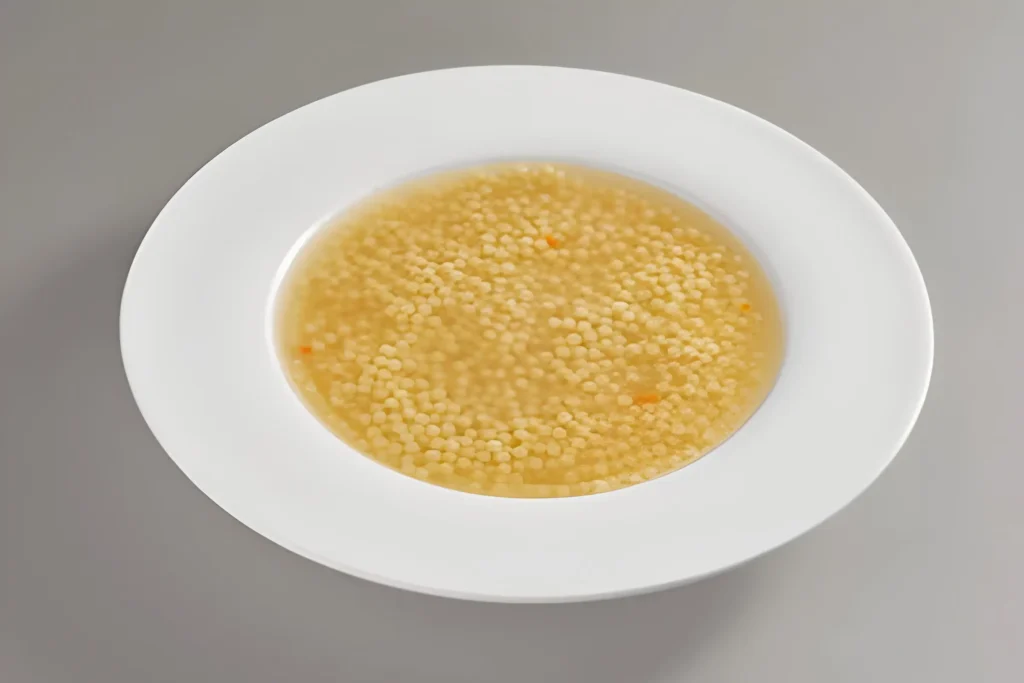
Making pastina soup fun for kids can make mealtime special. When you learn to make pastina, use these tips to make it exciting for your kids.
Visual appeal is key to getting kids to try pastina soup. Pick fun shapes like stars or alphabets. These shapes make the soup more fun.
- Select colorful vegetables to add to your pastina soup
- Use cookie cutters to create vegetable shapes
- Let kids help with safe cooking tasks
- Create a storytelling theme around the soup
Involve your kids in cooking to bond over pastina soup. Let them stir, add veggies, or sprinkle cheese. It makes them feel involved and teaches them about cooking.
| Kid-Friendly Ingredient | Benefit |
|---|---|
| Mild cheese | Adds creamy texture kids love |
| Carrots | Natural sweetness and bright color |
| Mild herbs | Introduces gentle flavor profiles |
Keep the soup’s flavor mild and comforting. Use a gentle chicken broth with subtle seasonings. Start with small amounts of herbs and add more as your kids get used to them.
Seasonal Adaptations for Your Pastina Recipe
Italian pastina soup changes with the seasons, making it a versatile dish. It adapts to fresh ingredients and weather. Your comfort food can evolve with the seasons.
In spring, add fresh green ingredients to your pastina soup. These vibrant additions include:
- Tender asparagus spears
- Sweet green peas
- Delicate spring herbs like basil and chives
- Crisp baby spinach leaves
Summer brings a lighter version of pastina soup. Use less broth and add raw or lightly cooked veggies. Try these summer ingredients:
- Diced heirloom tomatoes
- Zucchini ribbons
- Fresh corn kernels
- Chopped fresh parsley
Autumn and winter need heartier pastina soup. Use robust root veggies and warming spices for comfort. Consider these ingredients:
- Roasted butternut squash cubes
- Diced carrots
- Caramelized onions
- Dried thyme and rosemary
Changing the soup’s consistency is important for each season. Use less liquid in summer and more in winter. This makes the soup more substantial.
| Season | Key Ingredients | Soup Consistency |
|---|---|---|
| Spring | Green vegetables | Light, brothy |
| Summer | Fresh raw vegetables | Minimal broth |
| Autumn | Root vegetables | Medium thickness |
| Winter | Hearty vegetables | Thick, rich |
Pastina soup is all about being adaptable. Let your creativity shine through each season.
Conclusion
Pastina soup is more than just a meal; it’s a journey through Italian tradition and comfort. Learning to make pastina connects you to a rich cultural heritage. It turns simple ingredients into a healing, delicious experience. Now, you can make this beloved Italian penicillin soup with confidence and skill.
Every bowl of pastina shares a story of family, wellness, and love. It’s perfect for when you’re feeling under the weather or just want a warm, comforting meal. The techniques you’ve learned let you try different ingredients and add your own special touches.
Your culinary adventure is just beginning. Every time you make pastina soup, you join a long tradition that goes beyond cooking. Enjoy the simplicity and flavors, and remember, sometimes the simplest meals are the most profound. Your kitchen is now a place where you can find authentic Italian comfort food.
With these insights, you’re ready to turn a simple pot of pastina into a meal that warms your soul. Enjoy your cooking journey!
FAQ
What exactly is pastina soup?
Pastina soup is a traditional Italian dish. It has tiny pasta shapes, like stars, cooked in chicken broth. It’s known as “Italian penicillin soup” and is loved for its healing properties.
Why is pastina soup called Italian penicillin?
It’s called “Italian penicillin” because it’s believed to help when you’re sick. The warm broth and easy-to-digest pasta make it a comforting choice.
What ingredients do I need to make pastina soup?
You’ll need stelline pasta, chicken broth, salt, and pepper. You can also add Parmesan cheese, eggs, or herbs. Some recipes include chicken or extra veggies for more nutrition.
How long does it take to make pastina soup?
Pastina soup takes about 20 minutes to make. It’s quick and easy, perfect for busy days or when you’re not feeling well.
Can I make pastina soup vegetarian?
Yes! Use vegetable broth instead of chicken broth. Add tofu, beans, or more veggies for a tasty vegetarian version.
Is pastina soup good for children?
Yes, it’s great for kids. The pasta is small and easy to eat. You can also add ingredients kids like to make it more fun.
What is the best way to store leftover pastina soup?
Keep it in an airtight container in the fridge for 3-4 days. You might need to add more broth when reheating. Don’t freeze it, as the pasta can get mushy.
Can I use different pasta shapes for pastina soup?
Yes, you can use other small pasta shapes like orzo or alphabets. Just cook them for the right amount of time to avoid overcooking.
Is pastina soup nutritionally beneficial?
Pastina soup is full of nutrients. It has carbs, proteins, and vitamins from the broth and optional ingredients. It’s great when you’re feeling sick, helping to keep you hydrated and nourished.
How can I enhance the flavor of my pastina soup?
Add fresh herbs like parsley or basil. A squeeze of lemon juice or grated Parmesan cheese can also help. Try adding garlic, onions, or fresh veggies for more flavor.
Add a Dash of Your Thoughts!
There are no reviews yet. Be the first one to write one.

